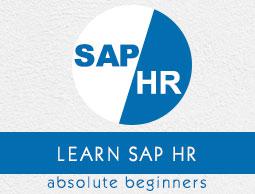SAP HR - Introduction
SAP Human Capital Management (SAP HCM) is one of the key modules in SAP and is also called SAP Human Resource (HR) or SAP Human Resource Management System (SAP HRMS). SAP HCM contains many submodules and all these modules are integrated with each other.
The key modules are as follows −
Organizational Management − Organizational Management includes Personnel development, Personnel cost planning and event management.
Time Management − Time management includes time recording, attendance, time schedule, shift management, etc.
Personnel Administration − Personnel Administration includes personal and organizational structure, Infotypes, integration with time and payroll, etc.
Payroll − Payroll deals with payroll types, payroll group configuration, primary and secondary wages, gross pay, bonus, etc.
Recruitment − Recruitment includes hiring an employee, maintaining HR master data, etc.
Training and Event Management − Training and Event Management deals with identifying training needs, scheduling training, training cost management, etc.
Travel Management − Travel Management includes managing official trips, cost management for travel, travel expenses, etc.
Organization Management
Organization Management allows you to manage the enterprise structure and analyze organization plans.
The key features are −
In organization management, you can configure system settings that is required for enterprise structure, personnel cost planning, etc.
You can define plan version to configure various organization plans at the same time.
Only one plan version defines your organizational current plan.
You can edit, change or compare different organization plans using plan version.
You can have two different plan versions, one for marketing and other one for sales hierarchy.
You can compare or edit both the plans but only one plan can be used at a time.
How to set a Plan version as active?
There are two ways to set a plan version.
Step 1 − Use the code T-Code: OOPV

Step 2 − Go to IMG → Personnel Management → Global Settings → Plan Version Maintenance → Maintain Plan Versions.
You can select from the list of available plans.

Organizational Object Types
An Organization plan consists of various object types, which define the grouping of similar data together. Each object type consists of a unique object key. All object types are linked together with a relationship among each other.
Example − A person holding a position that is defined by a specific job.
Relationship
In an Organization plan, relationships are used to link different object types.
Example − A person holding a position in an organization and is assigned with cost center. It defines Person to position relationship and position to Organization unit.
While defining an hierarchical organization structure, you are creating a relationship between organization objects. When a person is holding a position in an organization unit, it means there is relationship between the position object and the organization object.
Validity
It determines the life of object types. At the time of object creation, you enter the start and the end time of the project and this determines the validity of the object.
There are various types of object types that can be defined in an organization plan. Given below are most common object types and their keys −
| Object Type |
Key |
| Organizational Unit |
O |
| Person |
P |
| Cost Center |
K |
| Position |
S |
| Job |
C |
Key Features of Organization Objects
The key features are −
You can create or change an existing object types, which are not managed.
Example − Object type person from HR Master Data.
You can also define the relationship between different object types that should be proposed in the course of the authorization check.
It is also possible to define an object type hierarchy to generate reporting.
It is also possible to change the key of standard objects type- "S" for Position, "T" for task.
There are two types of Relationships −
Number Ranges
You can maintain different number ranges for Organization Management and Personnel administration in SAP HR. As discussed in previous topic, OM contains different object types.
| Object Type |
Key |
| Organizational Unit |
O |
| Person |
P |
| Cost Center |
K |
| Position |
S |
| Job |
C |
To maintain the different number ranges for OM objects, you can use T-Code: OONR.

You can also choose the following path.
Go to IMG → Personnel management → Organizational management → Basic settings → Maintain number ranges → set up number assignment for all plan versions → Execute.

The first two digits represent your plan version and the next two letters represent the object type.

Similarly, you can maintain number ranges for personnel numbers. A Personnel number is generated when an employee is hired. It can be generated internally or externally.
The personnel number range whether internal or external should be defined at the following configuration node.
Step 1 − Use T-code: PA04
Step 2 − You can also go to SPRO → IMG → Personnel management → Personnel Administration → Basic settings → Maintain number range intervals for personnel numbers.

Step 3 − A new window opens. You will see Range Maintenance: Human resources. Go to Intervals to display intervals.

Step 4 − It will open a new window, Maintain Intervals: Human resources. You can check different number ranges for personnel number as shown below −

The NR Status indicates the last personnel number assigned/used up for that respective MOLGA. MOLGA Is used to support multi-country human resource management.










